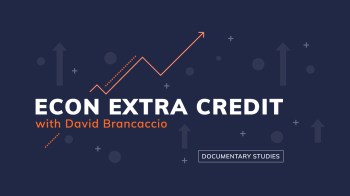There may be futures in diamonds
TEXT OF STORY
KAI RYSSDAL: If you really want to get a handle on the economic conventional wisdom, forget about that Bernanke guy and the Federal Reserve. Take a stroll over to the precious metals trading pits. Gold, a traditional safe haven in times of trouble, bumped up against $809 an ounce today. The shiny yellow stuff’s up 28 percent so far this year. Precious gems are a popular investment when the economy’s shaky too. But you can’t just trade diamonds the same way you trade gold or platinum. Not yet anyway. From New York, Marketplace’s Alisa Roth reports.
ALISA ROTH: For somebody who makes his living from the precious stones, Martin Rapaport doesn’t have much patience with all this business about diamonds being “forever” or “a girl’s best friend.”
MARTIN RAPAPORT: What they are trying to do is to embellish the romantic concept of diamonds. Which is fine. And they’re selling a “make me feel good today” product.
Rapaport speaks with intensity. Like he expects to be cut off before he’s done talking. Which is a real possibility, given the heresy of his idea. Rapaport wants to start a diamond futures exchange. That is, a way for investors to trade diamonds like a commodity. Buying bags of gems the same way they do bars of gold or sacks of wheat.
He tried it once before in the eighties but a collapsing diamond market doomed the project. Now he’s trying again. So are a couple of others. But the traditional diamond business is skeptical.
If you’ve ever bought a diamond in the United States, whether at Tiffany or at Wal-Mart, it probably passed through this sparkly block of 47th Street at some point.
New York’s Diamond District is an odd, very old New York kind of neighborhood. Hasidic men stand around talking in Yiddish. Creepy-looking guys hustle passersby to sell their gold and diamonds. And the runners, rumor has it, walk down the block with small fortunes of stones rattling around in their pockets like loose change.
The business still runs on some pretty old-fashioned values. Saul Goldberg, works in his family’s diamond company. He acknowledges that diamonds are starting to be seen as a kind of hard asset. But he likes to take a more romantic view of the business.
SAUL GOLDBERG: I’m a little bit old school I’ve been in the business aorund 30 years and I still love the idea that diamonds are bought for love, for engagements, for gifts, for special anniversaries. I would still like to have some belief that that still exists in this world.
That sort of sentiment gets Martin Rapaport all riled up.
RAPAPORT: To knock the idea and to try to blind the world to the fact that diamonds are really a commodity, I mean, I think that’s just absolutely wrong.
But commodities can be romantic. Can’t they? I mean look at gold or platinum.
I asked Ronald Friedman. He’s runs his family diamond business and he’s the president of the Diamond Manufacturers and Importers Association.
RONALD FRIEDMAN: I knew you were going to use the C-word — commodities. You talk about gold, platinum, other metals, oil. Those are all things that are always the same. No two diamonds are ever the same. Even if they weigh the same, they have the same measurements, they’re cut to the same angles, there is always something different from one diamond to another.
“Nonsense” says Martin Rapaport.
RAPAPORT: We can put diamonds on the table here and bring in experts and they’re not going to be able to tell the difference between the two diamonds.
Some dealers argue Rapaport’s plan would make it too easy to manipulate prices. And there’s the unspoken worry that knowing a diamond’s exact value could make it hard for dealers to make money. Rapaport says a futures exchange could actually end up saving dealers money.
Still, even if he can convince the skeptical to get involved, it could take years to create an exchange. For now, Rapaport’s running monthly online auctions. Trying to get a baseline price on which to fix his futures.
But even his critics concede that if anybody can pull this off, Rapaport can. Back in the seventies, Rapaport was kicked out of the Diamond Dealers Club for creating a price sheet for the gems. In those days, two dealers simply sat down and negotiated a price. These days, nobody would consider buying or selling a diamond without a copy of Rapaport’s price sheet.
In New York I’m Alisa Roth for Marketplace.
There’s a lot happening in the world. Through it all, Marketplace is here for you.
You rely on Marketplace to break down the world’s events and tell you how it affects you in a fact-based, approachable way. We rely on your financial support to keep making that possible.
Your donation today powers the independent journalism that you rely on. For just $5/month, you can help sustain Marketplace so we can keep reporting on the things that matter to you.


















